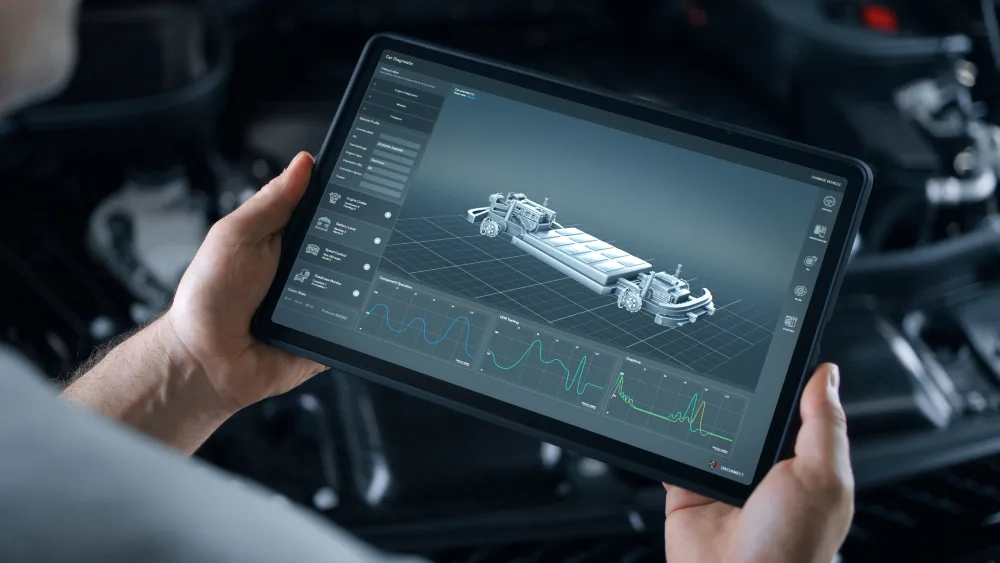
With the surge in demand for electric vehicles and lithium-ion batteries, a pressing need to address the environmental footprint of such batteries across their entire lifecycle becomes increasingly important. This is why the digital battery passport was introduced, a concept poised to redefine the sustainability narrative in the battery industry.
The inception of the digital battery passport dates back to 2019, courtesy of the Global Battery Alliance (GBA). This collaborative initiative, uniting governments, companies, and non-governmental organisations, envisions a future where batteries contribute to sustainable and circular value chains globally. At its core, the digital battery passport represents a transparent framework, meticulously tracking a battery’s journey from its manufacturing origin to its eventual disposal. This holistic approach encapsulates vital information about a battery’s composition, origin, performance, and environmental impact.
In a bid to propel sustainable practices, the European Union (EU) emerged as a frontrunner in advocating for the integration of digital battery passports. Set to come into effect in 2027, the EU’s regulation mandates the use of these passports for all batteries sold within its borders. This regulatory stride not only underscores a commitment to transparency but also sets a precedent for the global battery industry.
What’s Included?
Accessible through a user-friendly web-based application, the digital battery passport offers a comprehensive dashboard providing an overview of the battery’s entire lifecycle. Serving as a gateway to more detailed information, the dashboard allows stakeholders to delve into specifics, ranging from the battery’s composition and origin to its performance metrics and environmental impact. The contents of a digital battery passport are diverse, offering a wealth of information to stakeholders. This includes:
Battery Identification Number: A unique identifier that distinguishes each battery.
Battery Type: Lithium-ion, lead-acid, or other.
Battery Manufacturer: Details about the company responsible for the battery’s production.
Battery Production Date: The date of the battery’s manufacturing, providing a full timeline.
Battery Composition: In-depth information about the chemical makeup of the battery.
Battery Performance: Ongoing insights into how the battery functions over time.
Battery Environmental Impact: A comprehensive assessment of the battery’s environmental footprint, including factors such as greenhouse gas emissions.
Users & Benefits
The digital battery passport extends its array of benefits to a diverse range of stakeholders, empowering them with valuable insights and tools to foster sustainable practices. For manufacturers, the passport serves as a catalyst, encouraging the adoption of eco-friendly measures by promoting the utilisation of recycled materials in battery production. This not only aligns with environmental goals but also contributes to the creation of a more sustainable manufacturing ecosystem.
Battery users, too, reap the rewards of a passport system. It provides them with detailed information regarding their battery’s performance over time, offering a nuanced understanding of its efficiency and lifespan. Armed with such insights, users are better equipped to make informed decisions, contributing to responsible battery usage and disposal practices.
The recycling of electric vehicle batteries has been a contentious topic in the sector for many years, with questions remaining over the recycling capabilities of batteries reaching their end-of-life. Battery passports may play an important role in this topic, helping recyclers streamline their operations by facilitating the identification of batteries that are approaching the end of their useful life. This not only optimises the recycling process but also ensures that valuable materials are efficiently recovered from spent batteries, further contributing to the circular economy.
Furthermore, government agencies, tasked with regulating and overseeing environmental practices, could benefit from the comprehensive data provided by the digital battery passport. Armed with detailed information on battery composition, performance, and environmental impact, authorities can establish and enforce regulations that promote responsible battery disposal practices, thereby contributing to broader sustainability goals. In essence, the digital battery passport acts as a unifying force, aligning the interests of various stakeholders toward a common goal of sustainable and responsible battery management.
Data Challenges
The challenges involved with digital battery passports predominantly source from how data is collected, managed and shared. The development of a digital battery passport is a collaborative effort that involves collecting data from every stage of the battery’s life. This collaborative approach encompasses input from battery manufacturers, users, and recyclers, fostering a unified commitment to sustainability. Therefore the process of collecting comprehensive data throughout the battery’s lifecycle has many moving parts and opportunities for complications.
As well as collecting the data, the way it is managed and shared is also complex. Establishing a standardised format for sharing passport data remains an essential yet challenging aspect of implementation. The aim would be to use decentralised data storage, which involves distributing data across interconnected locations rather than storing it in numerous disparate places. This approach enables the maintenance of a singular source of truth, such as a manufacturer’s bill of materials. The pertinent information is then distributed as needed to selected parties in a peer-to-peer manner, aligning with the principles advocated by the EU Data Economy Strategy.
Looking Ahead
Despite being in its nascent stages, the digital battery passport stands as a beacon, guiding the battery industry toward a cleaner, more responsible future. As technology continues to evolve and the adoption of these passports becomes more widespread, they are poised to become an integral part of sustainable practices, reducing the environmental impact of batteries on a global scale.
In a world increasingly prioritising sustainability, the digital battery passport emerges as a potentially transformative concept that can steer the battery industry towards a more responsible future. At Elmelin, we work closely with the automotive sector developing innovative battery insulation solutions for electric vehicles. We’ll be keeping a close eye on how battery passports and the regulations tied to them will continue to develop over the coming years. If you’d like to find out more about the work we do, get in touch and a member of our team will be in touch.
